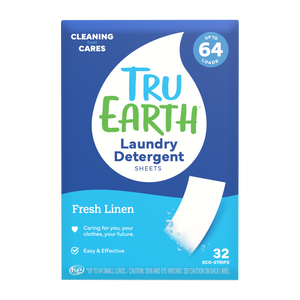Water is an essential resource for life. Without it, we would not be able to survive on our planet. Unfortunately, water quality remains a big concern in many areas of the world due to pollutants that are found in both natural and man-made sources.
Cleaning products are one of the most common sources of pollutants in water systems, following microplastics, as chemicals from these products often get released directly into waterways. These pollutants can have drastic effects on water quality, contributing to everything from algal blooms and dead zones to increased bacterial growth and decreased oxygen levels.
This article will explore how cleaning products impact water quality and what measures can be taken to reduce their contribution to pollution.

Environmental Impacts
The use of cleaning products for commercial purposes can have a devastating effect on both indoor and outdoor environments. The chemicals present in most commercial cleaning products are hazardous to the environment and when released into streams, rivers, or other bodies of water can lead to water pollution.
Pollutants from these chemicals can be absorbed into the food chain and cause harm to aquatic life. Waste created by discarded packaging and containers is also a major issue, as often they are made from non-recyclable materials that end up in landfills or require special disposal methods which use energy. It is clear that commercial use of cleaning products can cause severe damage to our environment if not properly managed.
How Is Our Water Affected?
When a hazardous combination of volatile organic compounds (VOCs) are introduced into our oceans, rivers, and lakes via sewage discharge, the waterway can become polluted with dangerous toxins.
This is due to the fact that most waste treatment processes are unable to remove VOCs such as phosphates found in common laundry and dishwasher detergents. Phosphates act as a fertilizer for algae which then lead to algal blooms that deplete oxygen levels in the water and can harm ecosystems by making aquatic life toxic.

Not only do algal blooms have adverse effects on aquatic life, but they also block sunlight from entering the water which prevents photosynthesis from occurring in underwater plants; depriving them of essential nutrients. Moreover, these blooms disrupt fishing activities due to their ability to reduce commercial fish populations as well as create an off-flavor and odor problem of fish from contaminated waters.
The long-term effects of VOC contamination in waterways can be detrimental if not properly monitored and managed. The presence of VOCs can thus significantly damage fragile marine ecosystems and impact human health when consumed in seafood products.
What Can Be Done?
Phosphorus, nitrogen, and ammonia are the most dangerous volatile organic compounds according to the Environmental Protection Agency. These VOCs are especially hazardous as they pose a risk to water, air, and soil quality if introduced in large amounts.
They are ubiquitously found in a wide variety of cleaning products, from detergents to carpet cleaners to disinfectants. When these chemicals enter the environment, they can cause a range of negative effects, such as smog formation, acid rain, and an increase in ground-level ozone.
In addition, these VOCs have been linked with health problems like respiratory illnesses and eye irritation. It is important to safely dispose of any cleaning product that may contain these dangerous chemicals to protect the environment and public health.
When it comes to selecting the right cleaning product, it's important to look carefully at the labels. Not only should eco-friendly options be top of mind, but try to find a multi-purpose cleaner that promises to do more with less.
That's why Tru Earth's multi-surface cleaner is an ideal option. This all-in-one solution contains no harmful chemicals or toxins, making it safe and effective for surfaces around the home - from kitchen countertops and bathrooms to windowsills and floors.

This Is Why Tru Earth Is a Great Choice
Tru Earth's disinfecting Multi-Surface Cleaner is an outstanding choice for any household. Not only does it eliminate 99% of germs, bacteria, fungi, mold and viruses that live on your surfaces, countertops and floors – it also helps reduce plastic waste in landfills. Each strip you use keeps one plastic bottle out of landfills thanks to the biodegradable cardboard sleeve that replaces traditional plastic bottles.
Plus, the product is hypoallergenic, non-toxic, and safe to use around children and pets. With its powerful disinfecting capabilities and eco-friendly packaging, Tru Earth's Disinfecting Multi-Surface Cleaner is a great choice for those who want to keep their homes clean without sacrificing the environment.

Clean Your Home While Protecting the Environment!
In conclusion, green living and green cleaning are important for creating a more sustainable future. By making small changes in our homes, such as using eco-friendly cleaning products, seeking out renewable energy sources, and reducing water consumption, we can decrease our environmental impacts significantly.
Additionally, with increased awareness of the dangers of global climate change, it is essential to make sure that we are all doing our part to protect the planet.
Investing in green cleaning supplies and other energy-saving habits will help us maintain a healthier environment for generations to come.

